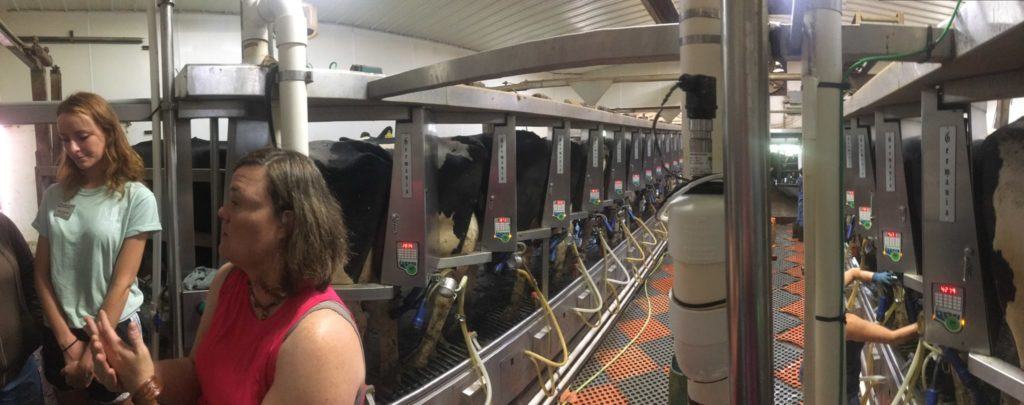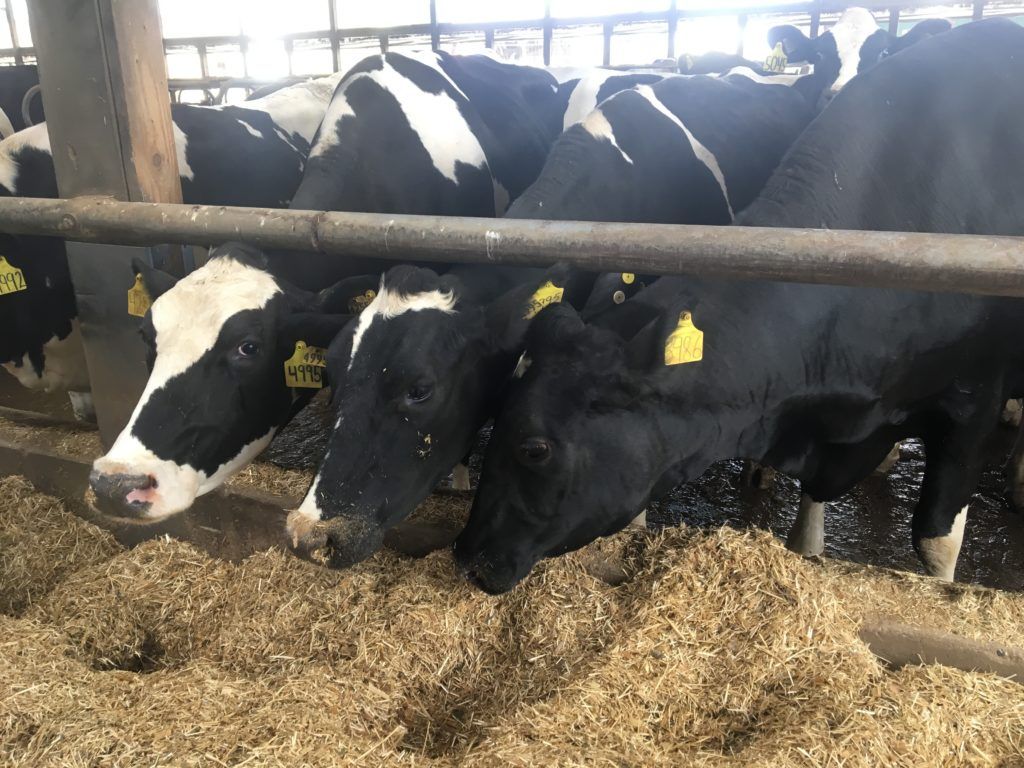For dairy farm families, everyday is Earth Day. Impressed by the care and concern for the environment shown on her first dairy farm visit, Dietetic Intern Kourtney Patrick decided to share her experiences.
This April 22nd we are celebrating the 49th anniversary of Earth Day! Earth Day started in 1970 after the world watched the effects of a massive oil spill in California. Today, Earth Day is recognized as a day of change and promoting a more sustainable lifestyle. People celebrate in ways like volunteering to pick up trash, turning off all their appliances for the day, or biking/walking everywhere for the day. While some change their unsustainable habits one day a year, dairy farmers have been aware and moving towards permanent changes for a while now.
Dairy farmers have been working hard to ensure their farm is more sustainable and friendly for the environment. Farmers are adapting to ensure you still get healthy, nutritious foods on your plate in the most efficient ways possible. When we look at what dairy farmers did back in the 1960s, their farms are much more efficient now. The USDA tells us that present day farmers are producing three times as much milk with half the amount of cows. Before visiting a farm, I always pictured a farmer, sitting on a stool, collecting a cow’s milk into a shiny silver pale. Well, it is the 21st century and a lot of things have changed. Some dairy farms now use robots to milk the cows! This is not only efficient for the farmers, but is comfortable for the cows. Robots resemble what it would feel like for a calf to be feeding. I have seen robots first hand, and without hesitation, the cows will actually walk right up to them. It is uncomfortable for a cow to have milk stored in their udder for too long, so they enjoy being milked by the robots.

Technology is also efficient for the farmers. The robotics track the cow’s health as well as the quality of the milk, letting the farmers know of any concerns. Farmers can track their herd health from a computer or even an app on their phones. The cows are fed a nutritious diet, checked on by veterinarians regularly, and most importantly, the farmers make sure the cows are comfortable. Most farms even have visits from an animal nutritionist! In order to keep the cows cool there are a few options. The farm I visited had sand bedding for the cows to lay down on, and some barns are kept cool with fans.When the cows are kept happy and healthy, they will produce more milk. By reducing the number of cows, farmers use less feed, water, and space needed to produce their milk. Less feed also results in less manure coming from the cows, which is where a lot of the greenhouse gases given off in dairy production comes from. As a result, the amount of carbon dioxide given off by producing one gallon of milk decreased by 63 percent from the years 1944 to 2007.

On a larger scale, the dairy farming community is working with different sustainability organizations to find how they can make their farming practices as efficient and sustainable as possible. One major study shows that the areas to focus on are manure storage and dairy cows’ diets. Farmers are following these suggestions by doing things like using the methane gas from manure as an energy source, which can be used to run an engine generator or a hot water heater. The use of manure as fertilizers help reduce the amount of chemical fertilizers and pesticides put into the environment. Manure also aids in the retention of water in soil, meaning that less water is needed to grow crops. A goal was set that as of 2020, greenhouse gas emissions given off as a result of dairy practices would be reduced be 25 percent.
So with Earth Day coming up, it is time to start thinking about how we’ll spend our Monday helping the environment. Dairy farms are doing their part every day in changing how they treat the earth. How will you change it?
